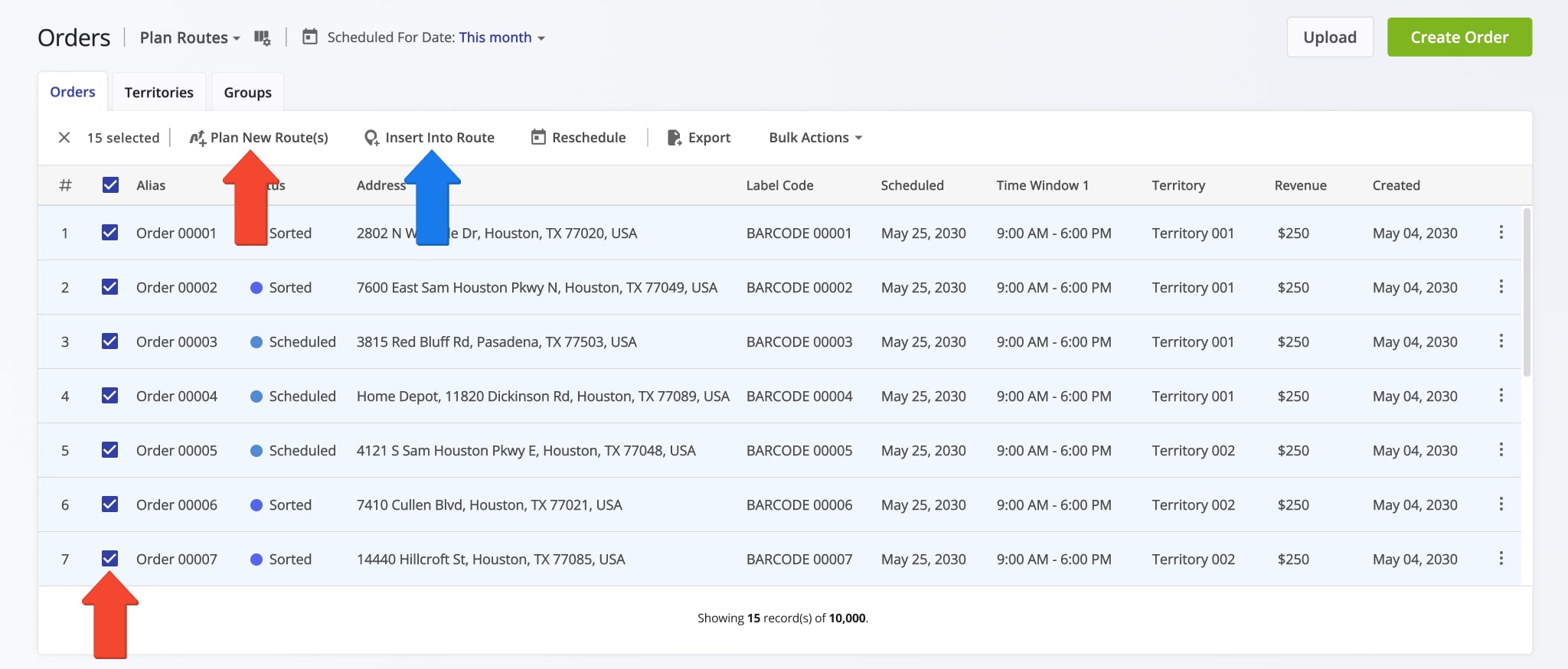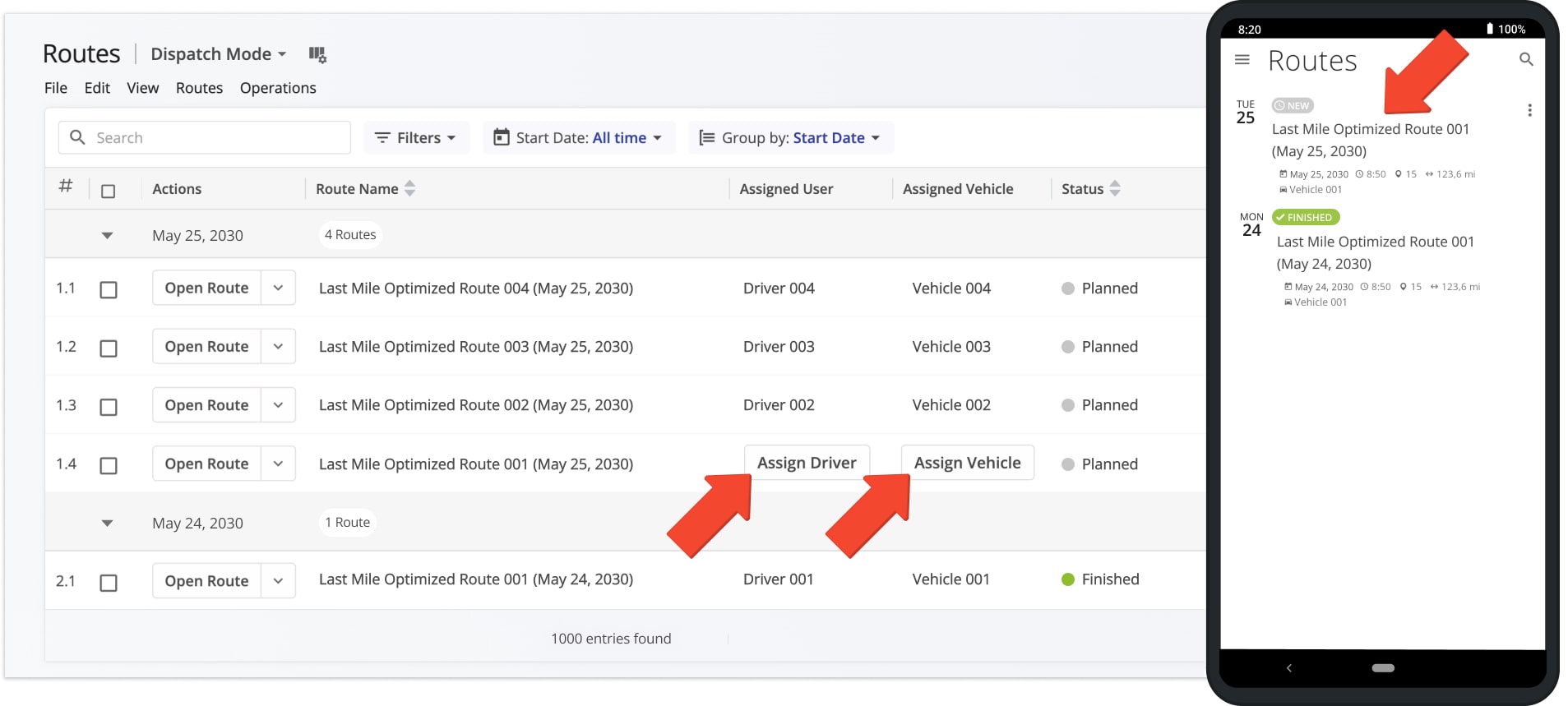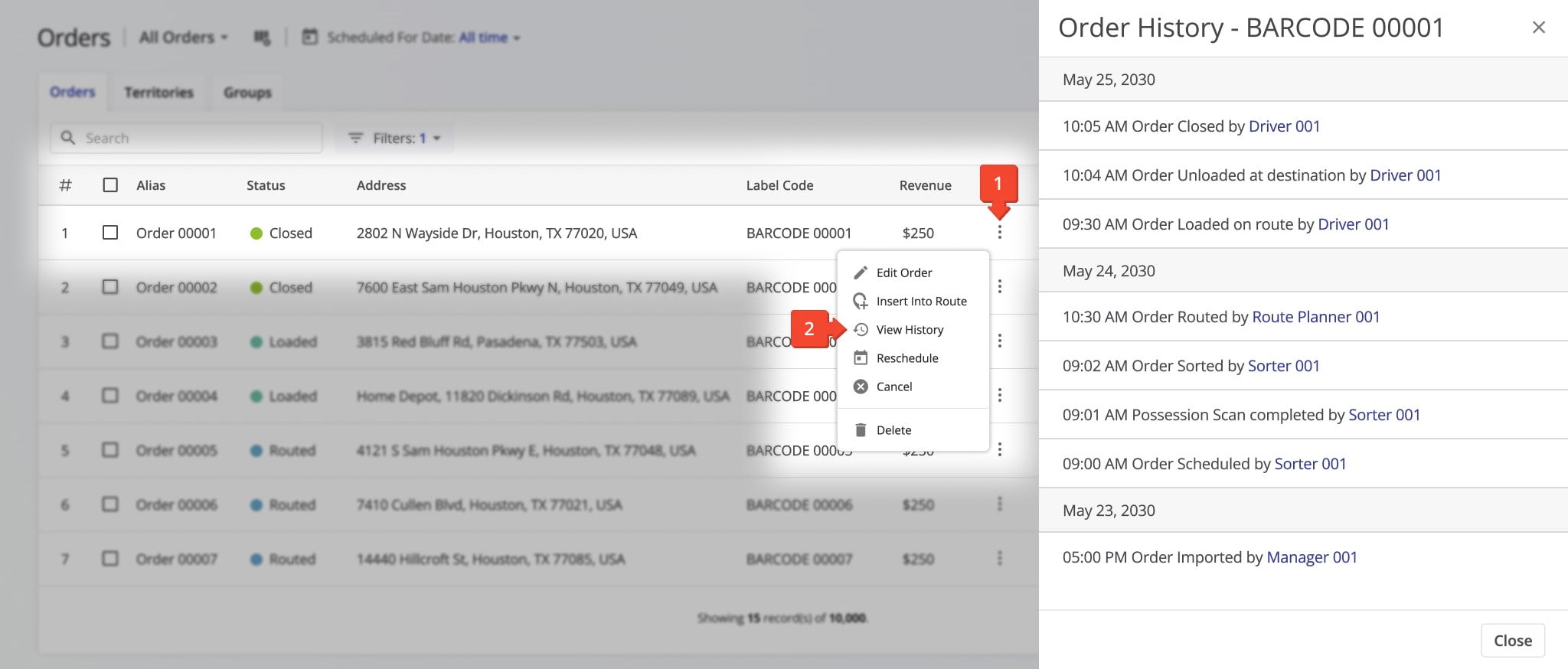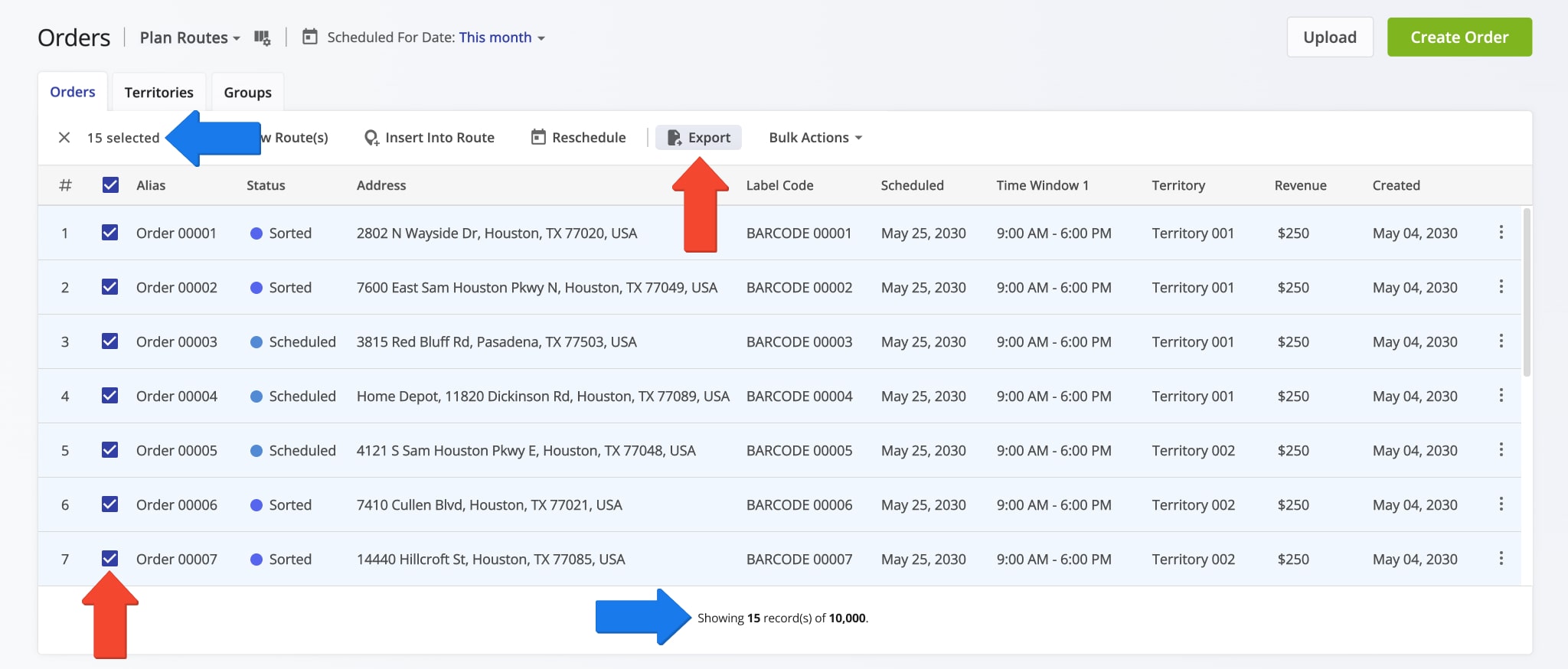Complete Orders – Dispatch Order Routes, Load & Unload Orders, Complete Order Tasks, Monitor Order Progress
Route4Me’s ERP Order Management and Routing System enables medium and large last mile businesses to automatically import orders from CRMs and other systems, sort, process, route, and complete millions of orders effortlessly. Managers, route planners, sorters, dispatchers, and drivers can use Route4Me’s intuitive enterprise resource planning tools to complete every part of the order lifecycle, from planning delivery and order routes, loading and unloading orders with the in-app barcode scanner, collecting proof of service or delivery, and managing orders and order analytics.
In this guide, you can learn about the order completion process. Specifically, how to plan and dispatch order routes to drivers, how to load and unload orders on routes and complete order routes as a driver, and how managers can check completed orders, reschedule canceled orders, view order analytics, and more.
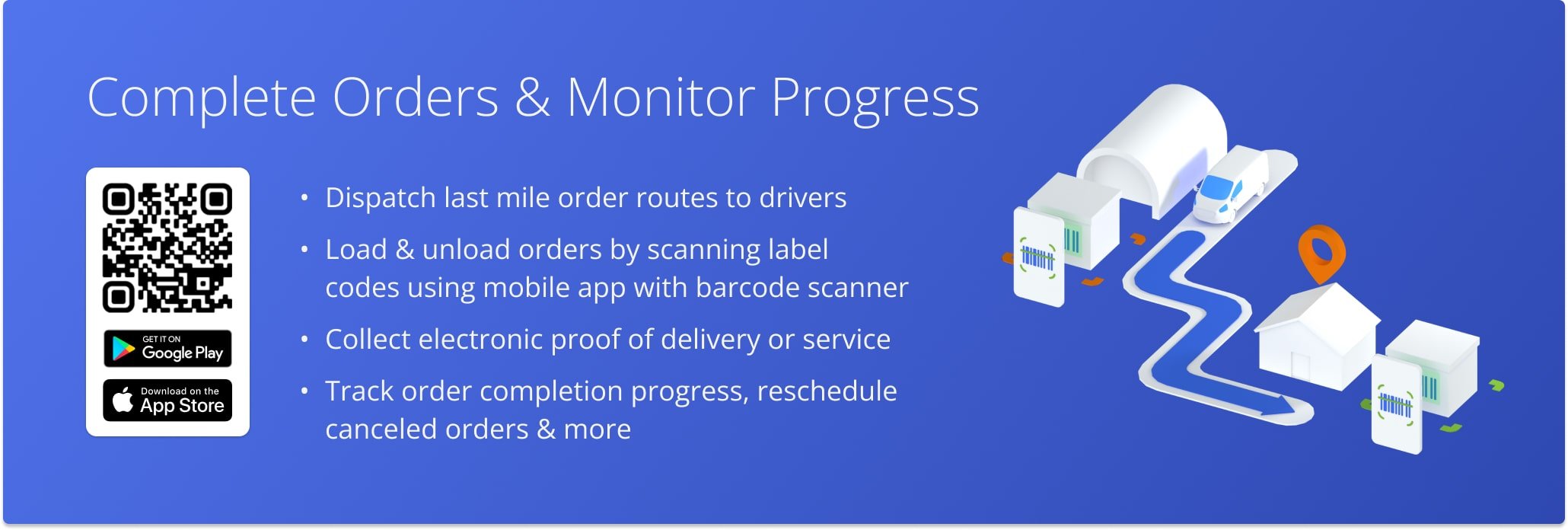
Table of Contents
Plan And Optimize Order Routes And Dispatch Order Routes To Drivers
After you add and import orders into the enterprise delivery routing software and sort and schedule orders, route planners can use them to plan routes. Filter orders so you can find and seamlessly route the correct orders. You can easily filter millions of orders by virtually any attribute using detailed order filters. To do so, go to “Operations” and then “Orders” from the Navigation Menu to open your Orders List.
Primarily, you can filter orders by their “Scheduled For Date” and Order Status. For your convenience, you can use Orders List View Modes that group order statuses by their purpose and application. For example, the “Plan Routes” View Mode includes the Sorted and Scheduled statuses that can be used for planning new routes or inserting orders into planned routes. Additionally, learn more about managing and filtering orders.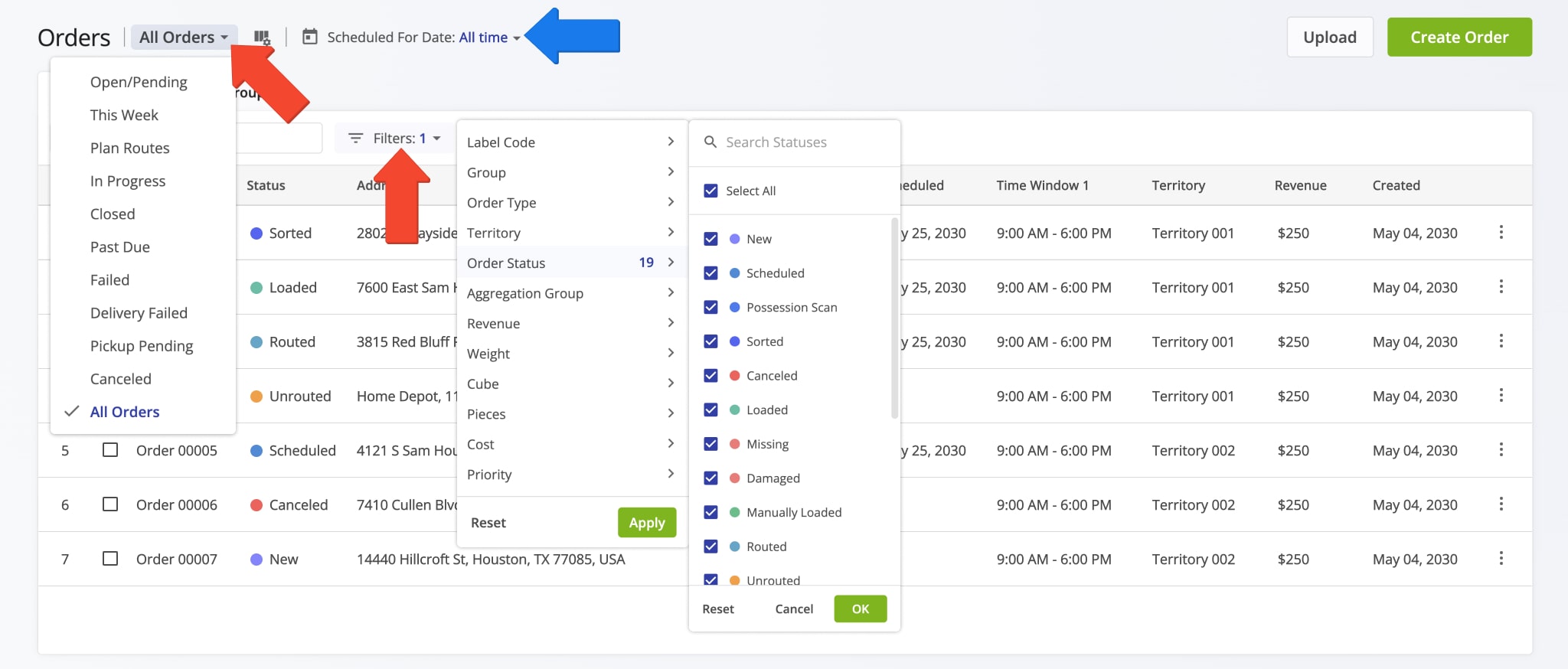
Next, select the orders you want to route by checking the boxes next to them. To select all filtered orders, check the box at the top of the list. After that, click the “Plan New Route(s)” button to plan a route with the selected orders.
You can also insert orders into already planned routes. For example, when an order was rescheduled, couldn’t be included in a route, etc. Specifically, you can insert orders into routes when their status is Scheduled, Sorted, Missing, or Unrouted. To do so, select orders and click “Insert Into Route“. Additionally, learn how to plan and optimize order routes in the Orders List, plan routes with Order Territories, route Order Groups, and plan order routes by scanning barcodes.
Then, dispatchers can dispatch optimized routes to drivers and vehicles. When using Optimization Profiles, routes are automatically dispatched to the driver and vehicle specified in the used profile. To manually dispatch a route to a driver, assign the preferred user to the given route. Similarly, to manually dispatch a route to a vehicle, assign the preferred vehicle to the route.
Accordingly, when a user is assigned to the route, this user can open and complete this route using Route4Me’s Mobile Driver App. As drivers complete their routes, the orders on those routes will change their status accordingly in real-time. For example, when orders are loaded on the route, the route is started, when orders are unloaded, etc.
Load Orders – Scan And Load Orders Using The Label Scanner
To scan order barcodes and load orders on a route, open the Route4Me Android Order Routing App or iPhone Order Route Planner. Then, tap the Menu Icon in the top left and go to “Routes“. Next, tap the preferred route to open it and tap the “Start Loading” button to open the label scanner and start scanning and loading orders on the route. Equally important, these steps are the same for using your device camera or a connected Bluetooth scanner.
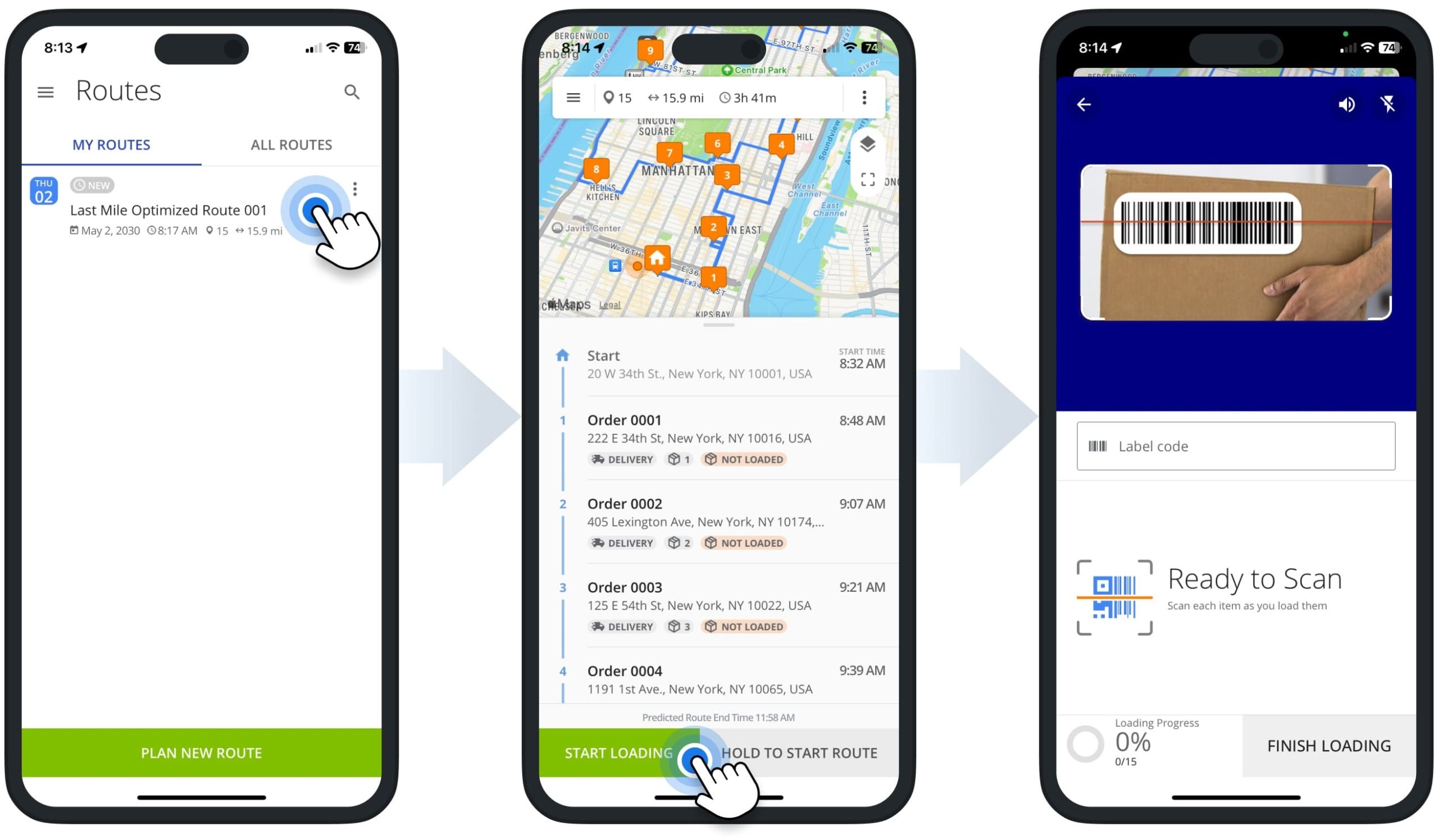
Loaded Orders – Scan Labels And Load Orders On Routes
Next, scan barcodes on the orders that need to be loaded. You can continue to scan order labels without closing the scanner. As you scan and load orders, the app shows the number and percentage of loaded orders. When you scan a label, Route4Me automatically shows the order’s Package ID, barcode data, and the associated order address. Package ID is a unique serial number assigned to the order’s destination on the route, in the sequence it is scanned.
Accordingly, after you’ve scanned and loaded all required orders, the app will show the green “Finish Loading” button. Next, tap the “Finish Loading” button to complete the loading process. On the route screen, the app will show the “Loaded” status next to each destination with a correctly loaded order.
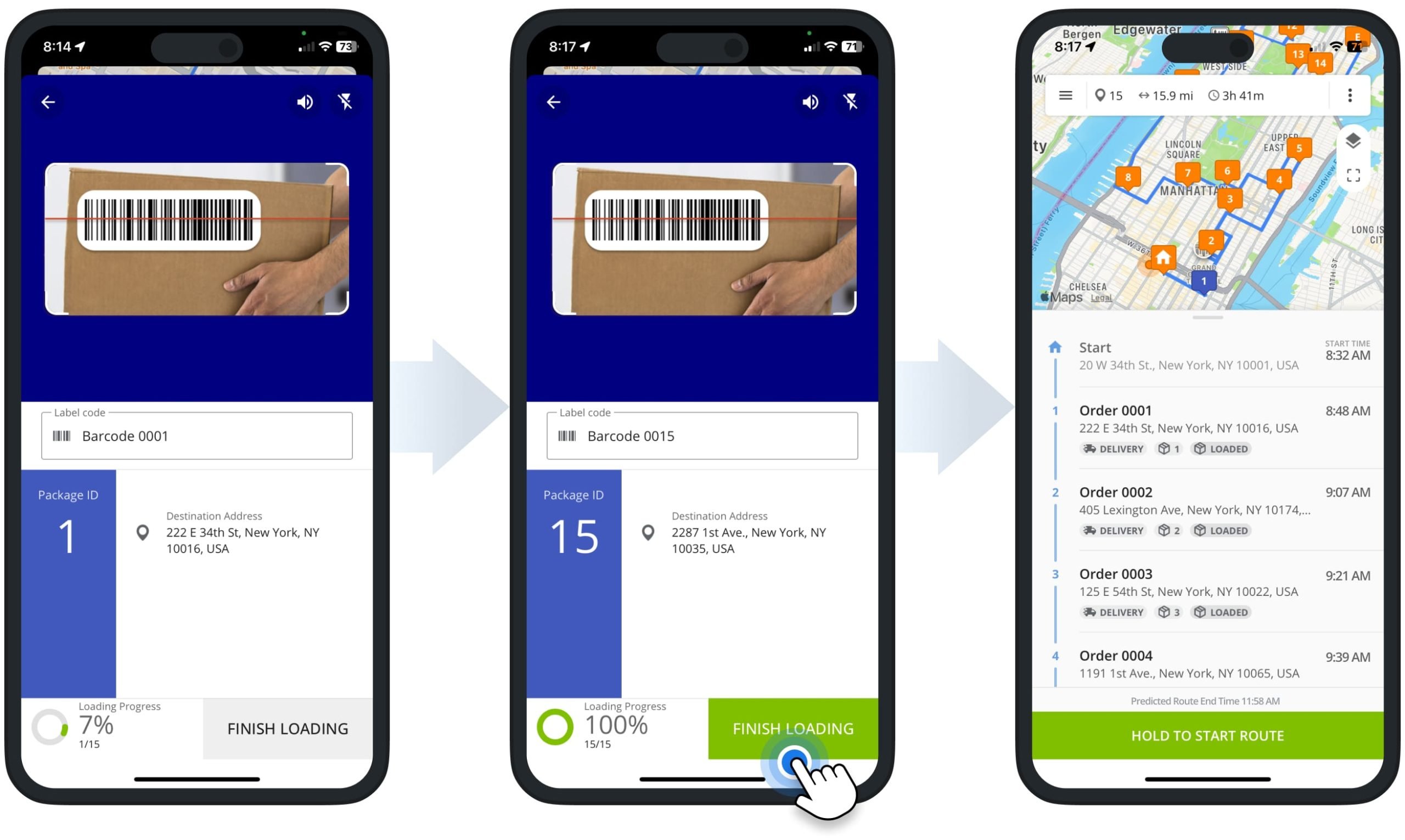
Not Scanned – Report Missing And Damaged Orders
You can finish the loading process without scanning and loading certain orders. To do so, tap the grey “Finish Loading” button. After that, the app will show all orders that haven’t been scanned and loaded on the route.
Next, tap the Package ID of each order and report it as “Missing“, “Damaged“, or “Loaded” without scanning. Additionally, you can select and simultaneously report multiple orders at a time. NOTE: When you report an order as “Missing” or “Damaged“, the corresponding destination is automatically removed from your route.
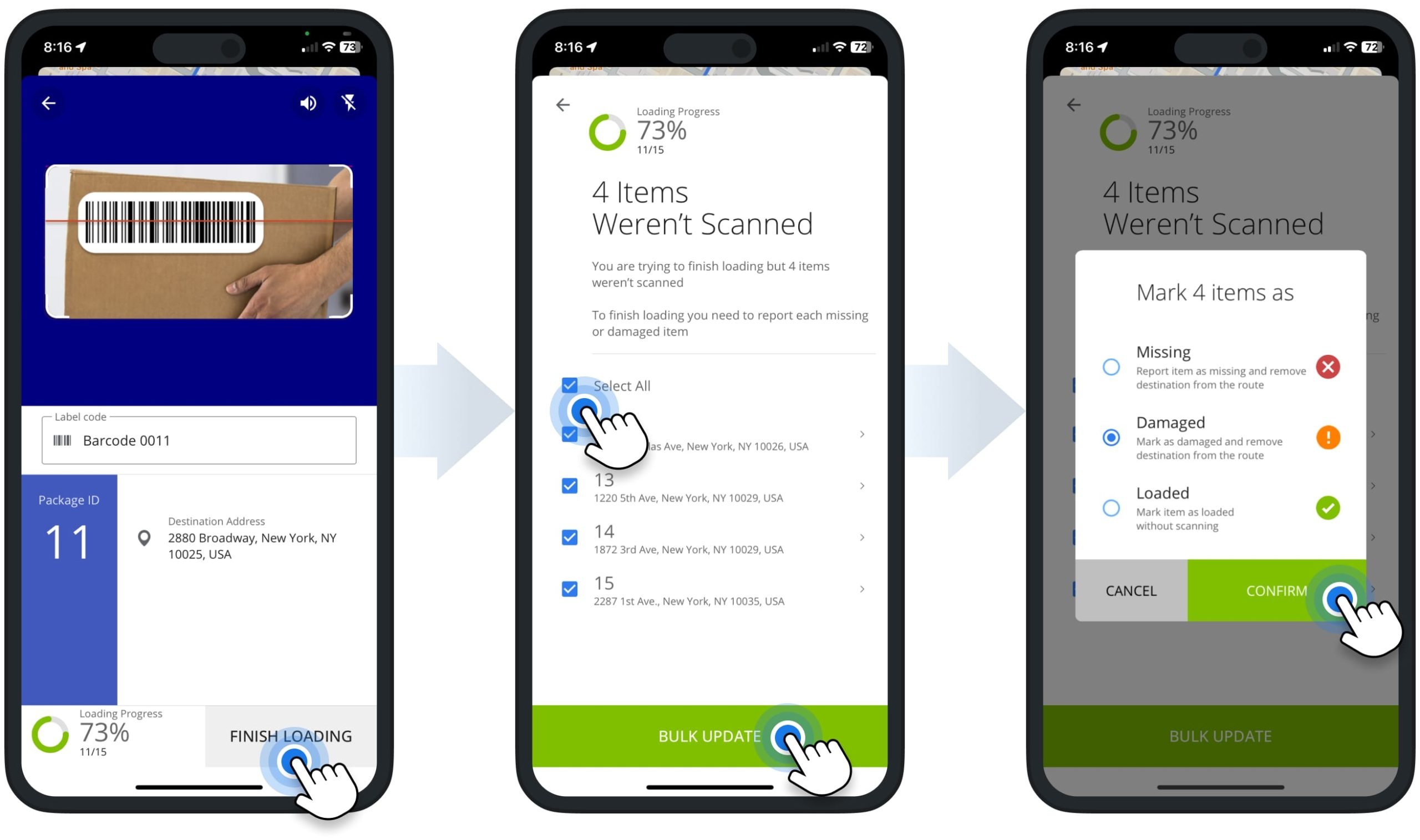
Start Routes – Start And Navigate Routes To Unload And Deliver Orders
After scanning and loading orders, proceed to start, navigate, and complete the route. Before starting the route, check the “Loaded” status next to each destination. After that, tap and hold the “Hold to Start Route” button to start the route. Once the route is started, its start time and date are automatically updated to the current time and date.
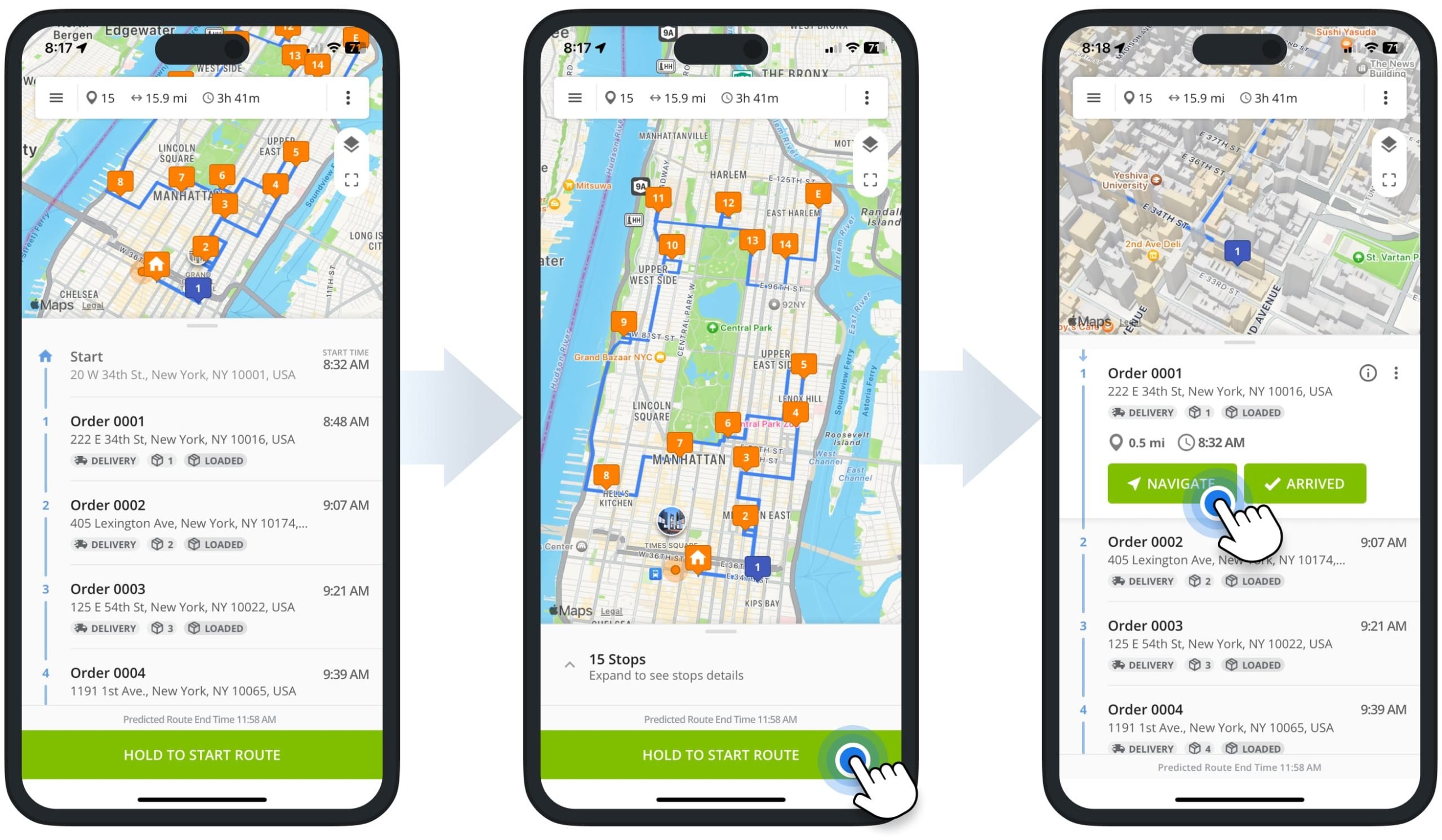
Next, navigate to each address on the route using In-App Voice-Guided Navigation. Additionally, you can navigate Route4Me routes using Google Maps route planner, Apple Maps route planner, Waze, and other navigation apps.
To navigate to a destination from your current location, tap the “Navigate” button next to the respective destination. Next, select the preferred navigation method, or the app will automatically launch your default navigation app. In the app’s settings, you can adjust your navigation settings, select the preferred default navigation app, etc.
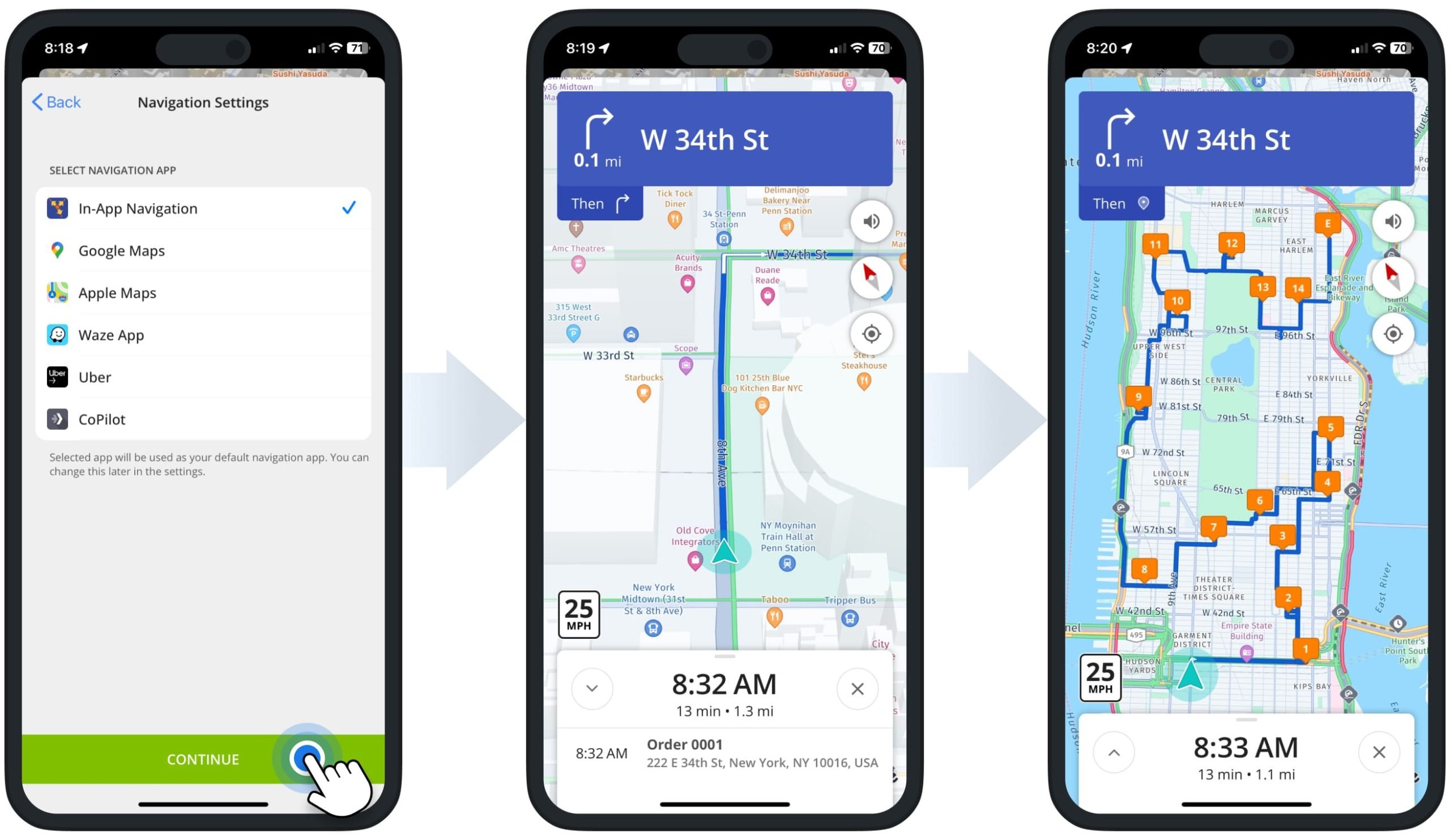
Unload Orders, Set Destination Statuses And Complete Mandatory Tasks
When you arrive at a route address, to unload the respective order, tap the “Arrived” button and then the “Set Status” button. After that, complete required Mandatory Tasks to unload the order.
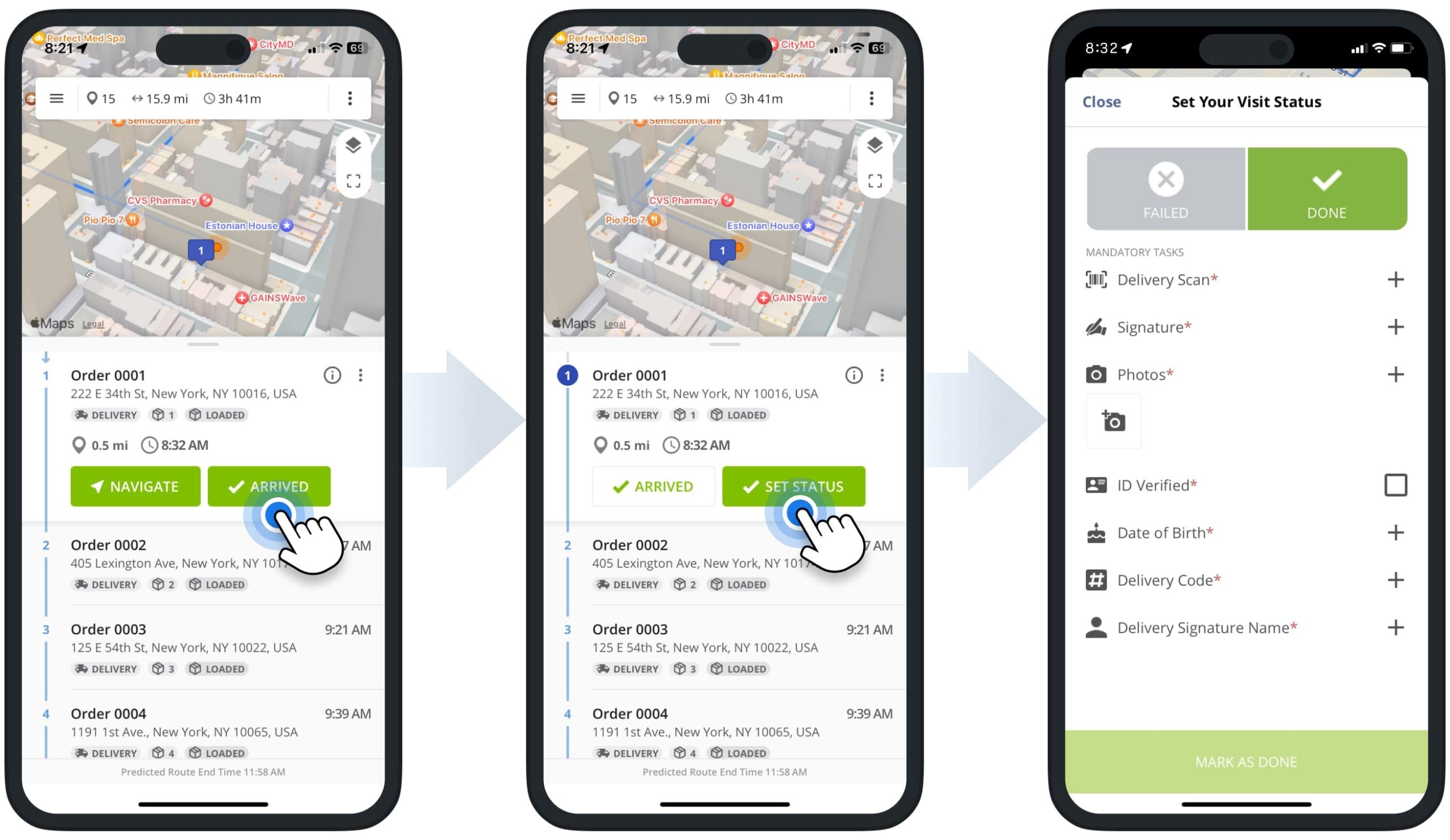
Done Status – Unload Order And Complete Workflow Mandatory Tasks
To unload the order and mark the destination as “Done“, select the “Done” status. Next, tap “Delivery Scan” and use the label scanner to scan the barcode on the order that needs to be unloaded. After that, complete the rest of the Mandatory Tasks to unload the order. For example, Mandatory Tasks can include capturing an e-signature, attaching a receipt photo, verifying ID, etc. Additionally, learn more about completing Proof of Delivery Workflows on Route4Me’s Mobile Route Planner app.
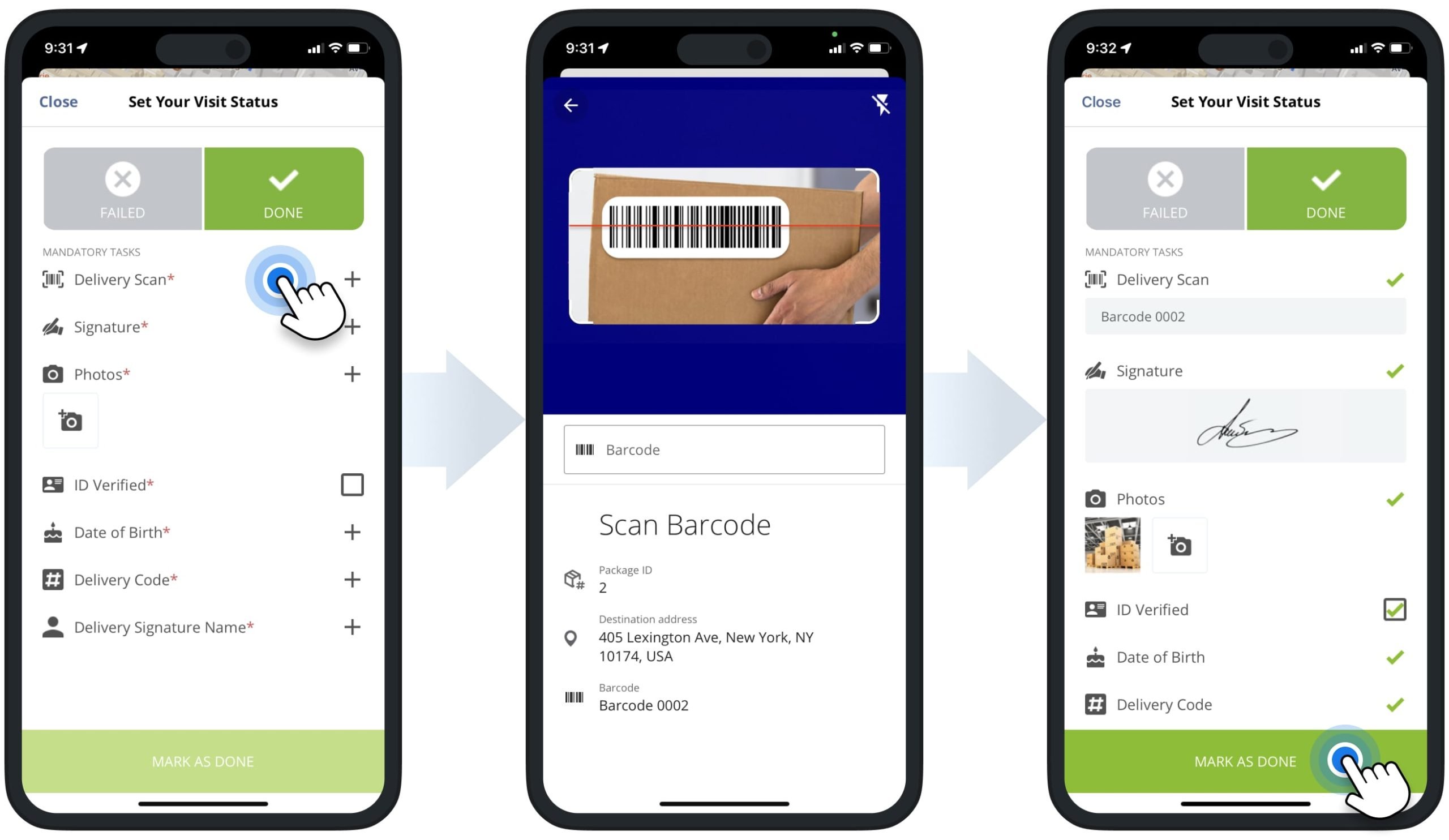
Failed Status – Can’t Unload Order And Order Failed Reason
When an order can’t be unloaded at its respective address, mark the destination as Failed. To do so, select the “Failed” status and then tap “Failed Reason“. Next, select the corresponding reason for not being able to unload the order and then tap the “Set Exception Code” button. After that, tap the “Mark as Failed” button.
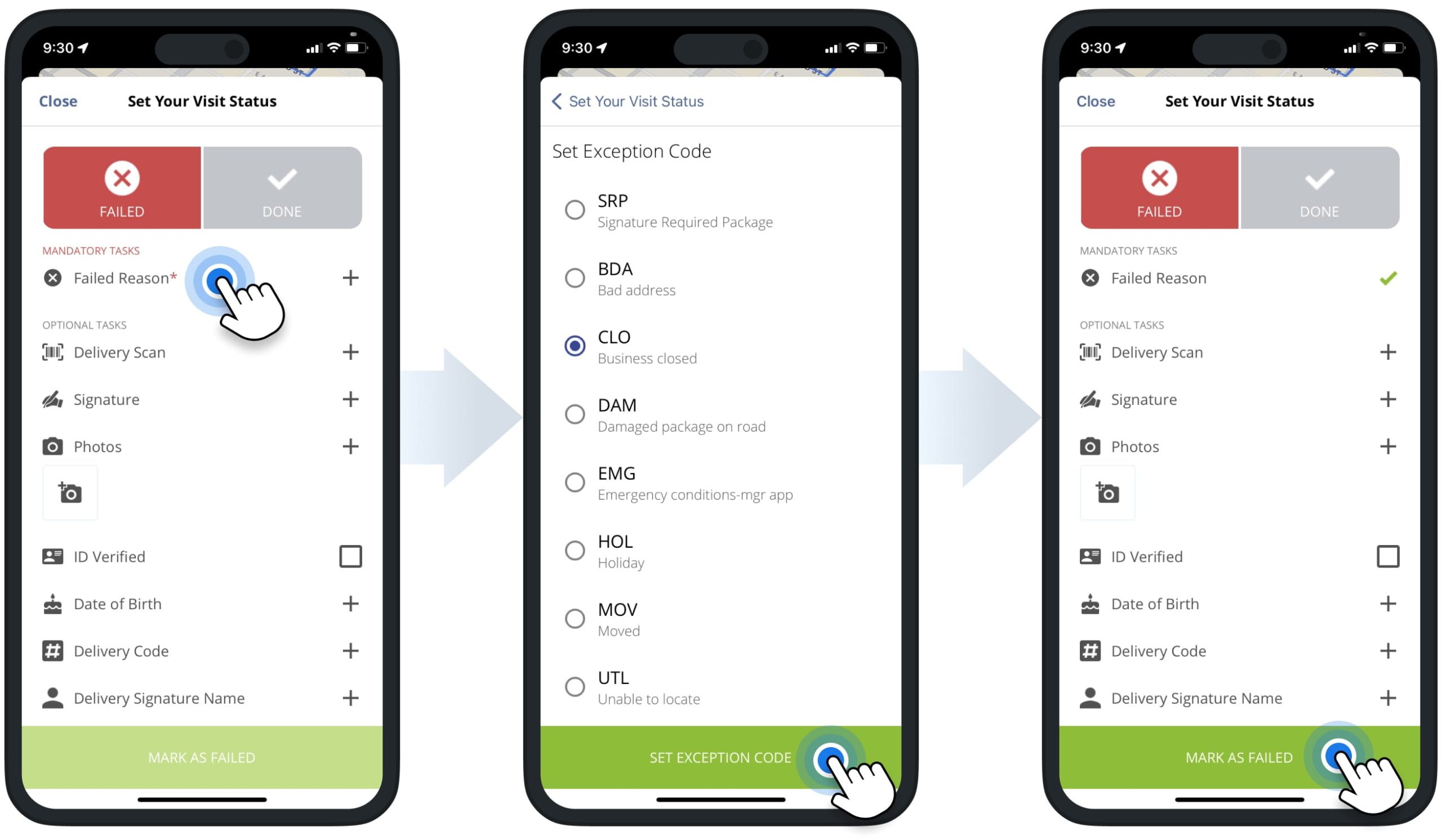
End Route And Check Route Summary With Route KPIs
After unloading the order at the last destination and marking it as “Done“, the app automatically prompts you to end the route. Alternatively, you can end the route manually by tapping the “End Route” button at the bottom of the address list.
If the route has destinations without statuses when you try to end it, Route4Me automatically shows all such destinations. Accordingly, to set the status to the remaining addresses, tap on each destination and set a corresponding status. After setting statuses on all destinations and ending the route, the app shows a route summary with KPIs. Specifically, the summary shows the total traveled distance and time, number of visited addresses, destination status ratio, and more.
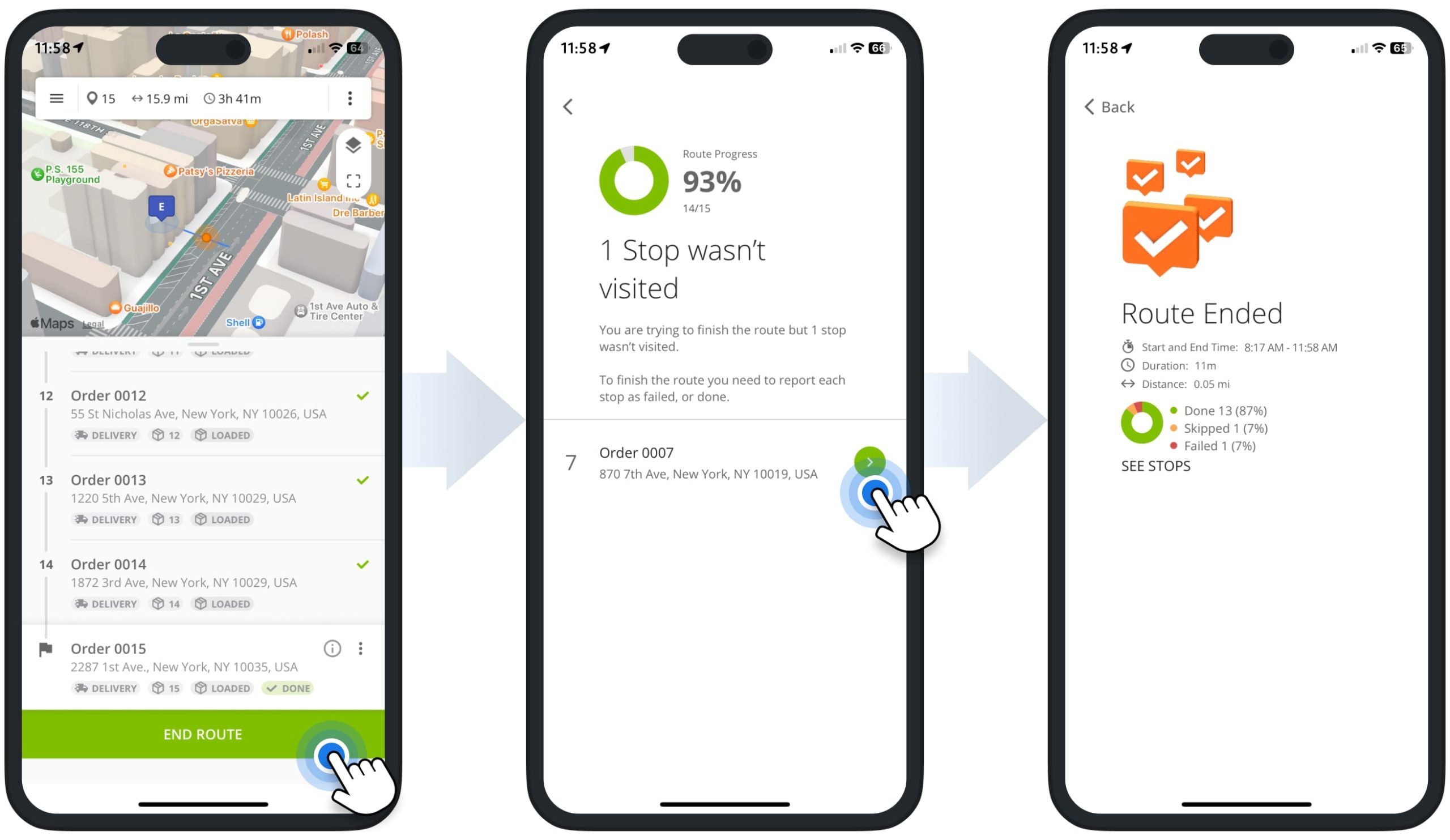
Check Completed Orders And Reschedule Failed And Canceled Orders
After that, once the order route is completed and orders have the “Closed“, “Failed“, or “Skipped” status, managers, route planners, and dispatchers, and other Route4Me User Types can check detailed order history, export order analytics, reschedule “Failed” and “Skipped” orders from the Route4Me Web Software, and more.
Order History – View Chronological Order Action History
To view a detailed chronological history of every action associated with a specific order, go to “Operations” and then “Orders” from the Navigation Menu, click the Three-dot Icon next to a preferred order, and select “View History”. This will open the “Order History” panel which shows a list of all actions associated with the selected order, along with the respective user and timestamps. Order history actions are grouped by date on the “Order History” panel and shown in chronological order. Specifically, you can see when and by whom an order was created, uploaded, or imported, scheduled, sorted, routed, loaded, unloaded, completed, and more.
Export Orders – Download Orders Reports And Statistics In Spreadsheet
To export data of multiple orders simultaneously, select the orders you want to export by checking the boxes next to them. At the bottom of the Orders List, you can see how many orders match your filters and are displayed on the page. Depending on the applied filters, you may have millions of filtered orders. To select all filtered orders, check the box at the top of the list. After that, click the “Export” button. Additionally, learn more about filtering orders and exporting order data and analytics.
Reschedule Orders – Schedule Unsuccessful Orders For Route Planning
When a driver can’t unload an order at its respective address, reach the planned destination, or get in touch with the destination contact person, they mark the destination as “Failed” or “Skipped“. Route4Me’s easiest delivery routing software enables you to seamlessly reschedule these unsuccessful orders so they can be used for route planning and optimization.
To do so, go to “Operations” and then “Orders” from the Navigation Menu. Then, select the preferred “Failed” and “Skipped” orders to reschedule by checking the boxes next to them. Then, click the “Reschedule” button from the actions bar above the Orders List. Next, in the “Change Schedule” panel, input or select a preferred date to schedule the selected unsuccessful orders for.
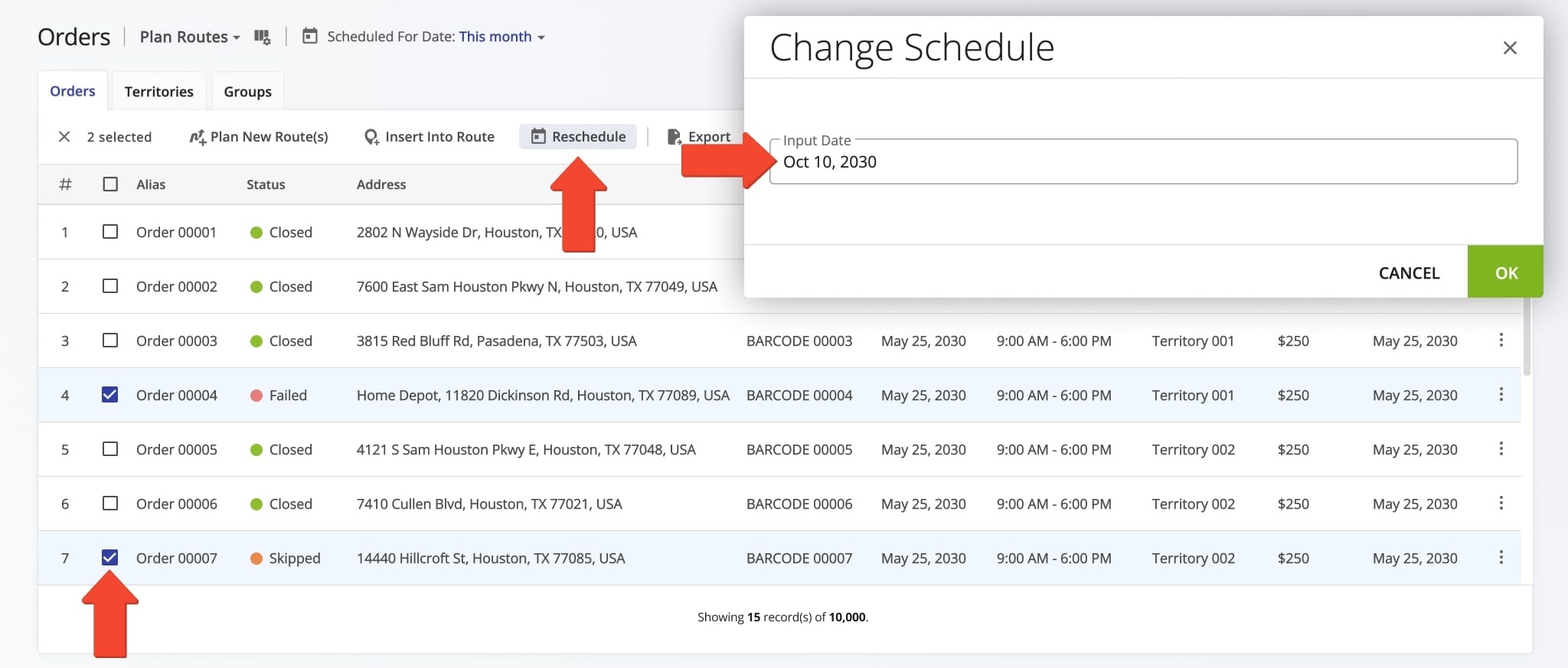
Accordingly, the status of these orders will change to “Scheduled“, and their scheduled date will update to the new selected date. Additionally, learn more about managing orders and order statuses.
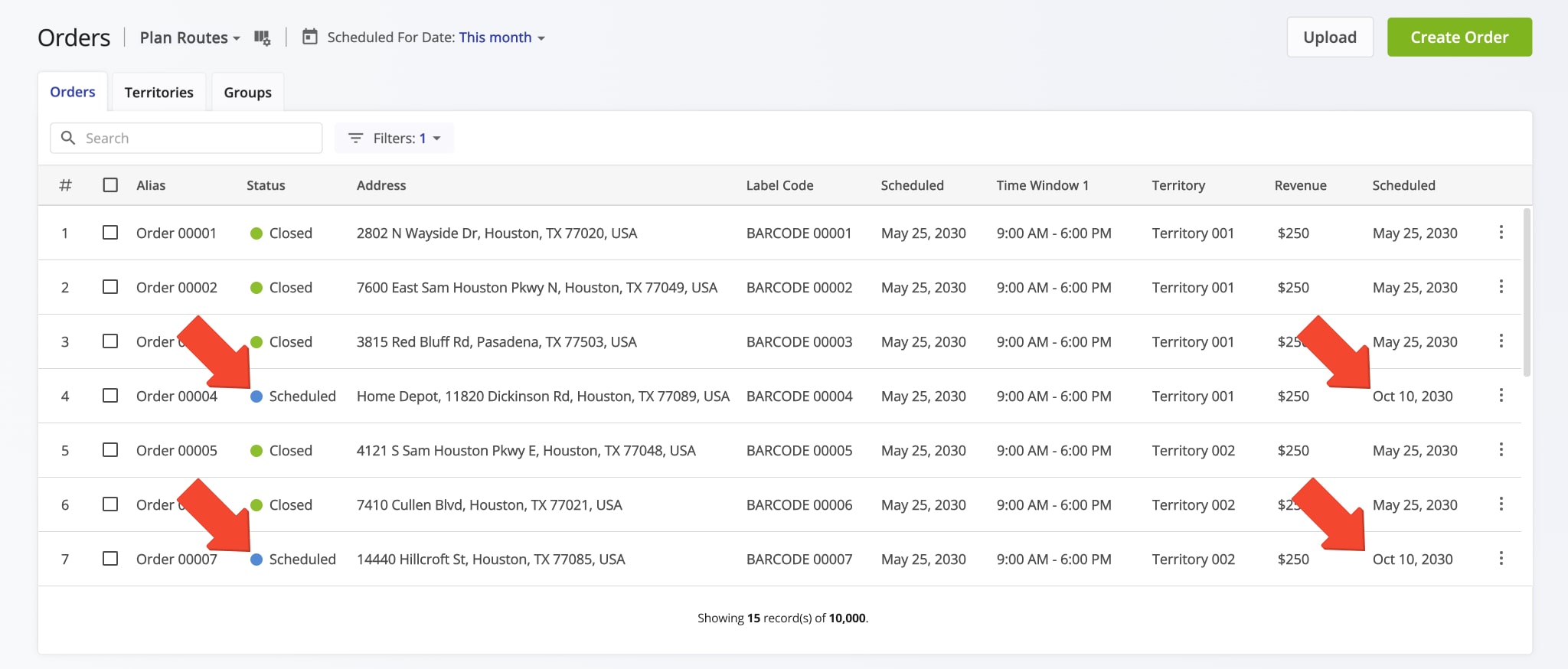
Visit Route4Me's Marketplace to Check out Associated Modules:
- Operations
Custom Data Add-On
- Operations
Advanced Team Management Add-On
